WET IC GAINS GROUND WITH INNOVATIVE WORK APPROACHES
Ever since operations resumed, WET IC project teams have focused on ensuring operational continuity and productivity with every site evolving specific ‘back-to-work’ strategies considering the local factors, statutory regulations with location-based safe work implementations to complete critical works before the onset of the monsoon and subsequently take up larger work fronts.

Giving a parallel push
Work continued uninterrupted at the RWS Boudh Water Supply project in Odisha, even during the lockdown with the client’s permission and support. “With 353 habitations to be networked and around 40% of works achieved, we have a long way to go,” remarks Project Manager, R. Rajakumar, reflectively. “We listed out remote locations along the alignment and successfully executed pipeline works and civil execution of the elevated
service reservoirs.”

“We deployed our resources in parallel activities such as hydrotesting of the pipeline, constructing valve chambers, thrust blocks, crossing works, etc., to void idling as much
as possible.”
R. Rajakumar
Project Manager,
RWS Boudh Water Supply Project
Initially, with a workmen strength of less than 200, it was tough going for Rajakumar, “but as the restrictions eased, we deployed our resources in parallel activities such as hydrotesting of the pipeline, constructing valve chambers, thrust blocks, crossing works, etc., to avoid idling as much as possible.” The use of plant and machinery is selective in water infrastructure projects and Rajkumar was spot on to line up some key equipment well before the lockdown. “In such remote areas, it is difficult to source earth moving equipment, so we developed a continuous engagement scheme for works which required such services.” Similarly, for the complex elevated storage reservoirs works, largely executed by local contractors and being a standalone structure, safety was ensured in a secure zone.
An all supportive client held Rajakumar and his team in great stead stepping in readily to solve any issue related to statutory clearances. “Today, thanks to our combined efforts, we have completed around 59% of works comprising 22 elevated reservoirs and 731 km of pipe laying, achieved INR. 2.78 crore of invoicing and expect to deliver the project by March 2021,” shares Rajakumar on a high.
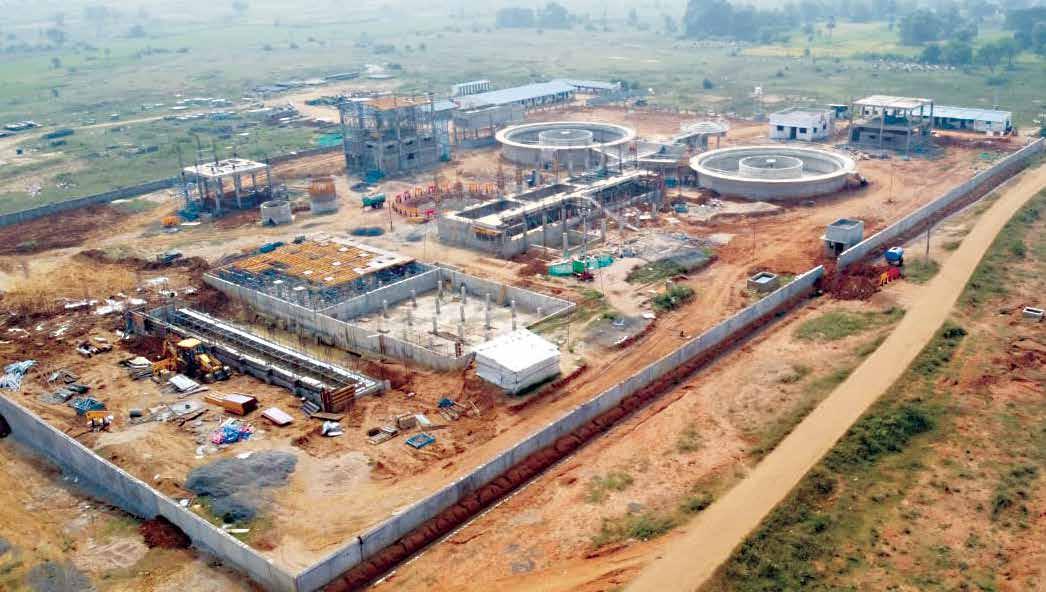
Overview of the 20.12 MLD Water Treatment plant under construction at RWS Boudh WSS Project
Shaping a hi-tech sustainable plant
WET IC’s 100 MLD Desalination Plant project at Dahej will be the country’s largest state-of-the-art plant and a role model for similar such upcoming sustainable water infrastructure projects. For the team led by Project Manager, Rajesh Madhaian, the lockdown was a big blow as the project was in its initial stage with work gaining momentum prior to the onset of the monsoon. “Being an in-plant job, we retained all our workmen following all safety and welfare measures inside the premises,” he shares. “It worked well for us for we got a marginal leeway during the lockdown, thanks to our client’s support, and were able to continue with the MS pipeline unloading along the alignment.”
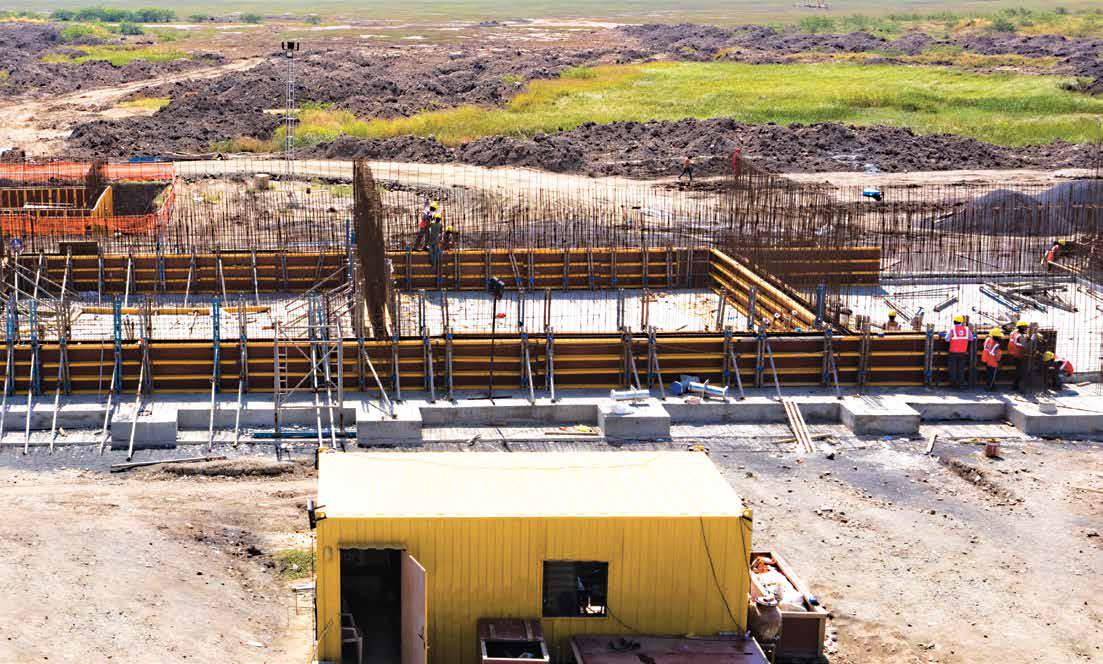
Lamella clarifier wall shuttering works at the 100 MLD Desalination Plant Project, Dahej
When operations resumed on 21st April, the team picked up pace, successfully adding 80 plus workmen in the first phase and gradually increasing the numbers to 350 across fronts. One of their immediate worries was to complete the ground improvement works before the onset of the monsoon as it required sourcing stone dust, aggregates, with statutory permits from quarries. “To bridge the gap, we introduced night operations and successfully completed the second milestone one month prior to the target that was acknowledged by our client,” shares Rajesh proudly. Subsequently, the structural works were taken up through the monsoon. 31% has been completed by end September.

“We introduced night operations and successfully completed the second milestone one month prior to the target that was acknowledged by our client.”
Rajesh Madhaian
Project Manager,
100 MLD Desalination Plant Project, Dahej
“We have scheduled a sustained progress over the next few months and though the contractual project deliverable is January 2022, the client is keen to achieve completion by the end of December 2021 and we are diligently working towards the cut off dates,” highlights Rajesh.
Closing in on project delivery
“We restarted work after April 23rd on a secure footing with a series of work mock-ups for the workmen,” says Project Manager, R Balaji’s at the Dhadusan LIS project. “As most of our workmen stayed at our camps, we used the lockdown to comprehensively initiate them to the new SOPs and COVID safety measures.” Continuously touch-basing with clients and subcontractors, the team ensured seamless resumption of activities with all precautions. With restrictions easing, they were able to source migrant workmen but the challenge was to quickly orient this new lot to the COVID-19 safety measures. “Initially it required a lot of effort from the new workmen to align with the SOPs but as the new-normal conditions were regularly oriented from our end, we successfully achieved productivity and ensured quality works.”

“We have completed some key tasks such as road works, construction of drains, slopes, backfilling, masonry, thrust block concreting, civil works for the switch yard, electro mechanical works and pipe line testing.”
R Balaji’s
Project Manager,
Dhadusan LIS Project
All our efforts have been worth it, mentions Balaji’s with a broad smile, “We have completed some key tasks such as road works, construction of drains, slopes, backfilling, masonry, thrust block concreting, civil works for the switch yard, electro mechanical works and pipe line testing.” With almost 95% works completed, Balaji’s is confident of closing out the project soon.

Overview of the Erode Water Supply Project
Aligning to a task-based approach
Operations at Erode WSP project resumed only on
9th May with 175 workmen. “On ground, we identified the critical work factors, conducted situational review meetings and assigned individual responsibilities with set timelines,” shares Project Manager,
D. Kumaresan. “In a way, we knew the exact feasibility of each task considering the external factors. Going by the safety zones, work was taken up after pre-inspection by the P&M, Formwork and EHS teams.”
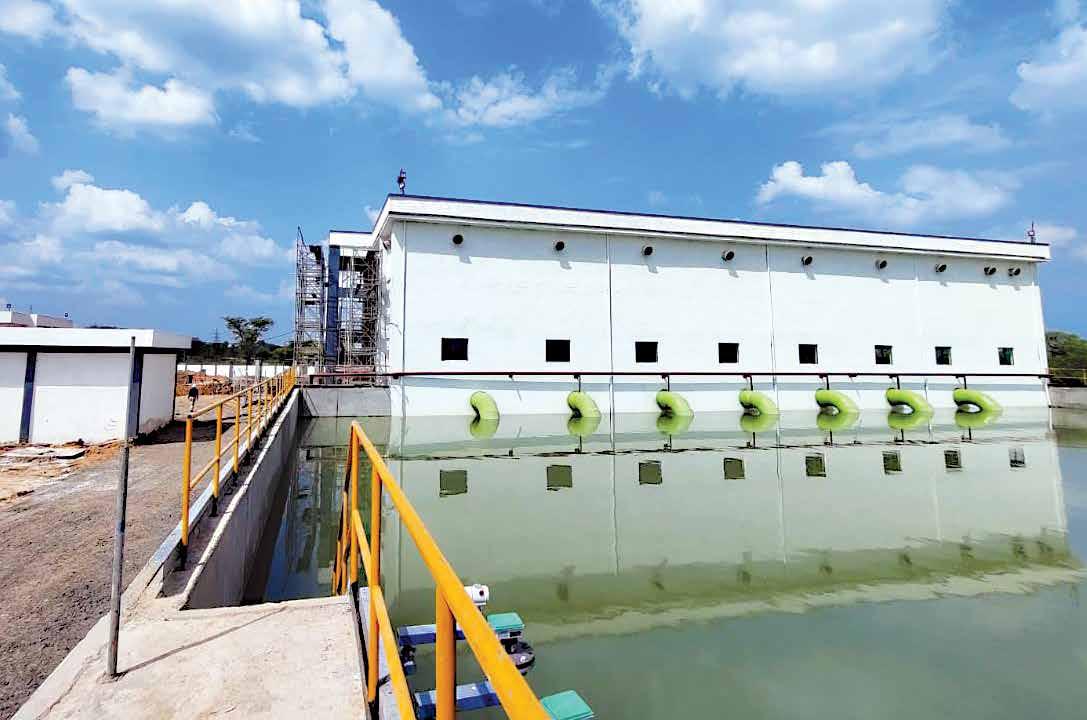
A fully operational pumping station at Bhalak

“Overall, we have made significant progress, commissioning the clear water pumping main, completing significant portions of the feeder mains and have started water supply distribution in a few zones.”
D. Kumaresan
Project Manager, Erode WSP
In line with their revised project schedule, the workmen count has increased to 470+ with TWAD authorities facilitating the remobilization approvals.
“Overall, we have made significant progress, commissioning the clear water pumping main, completing significant portions of the feeder mains and have started water supply distribution in a few zones. We are confident of delivering the project in December 2020,” shares Kumaresan, looking sure of himself.
On the move
Work at the Mallannasagar Reservoir Project was halted for just three days so the team could formulate their SOPs in line with the Telangana Government’s guidelines that permitted operations with all safety measures for significant infrastructure projects. “Within a day, we obtained the necessary permits,” mentions Project Manager, K.S. Viswanatham, and formed a 6-member task force team to ensure 24/7 safety across work fronts and camps by rearranging work structures.
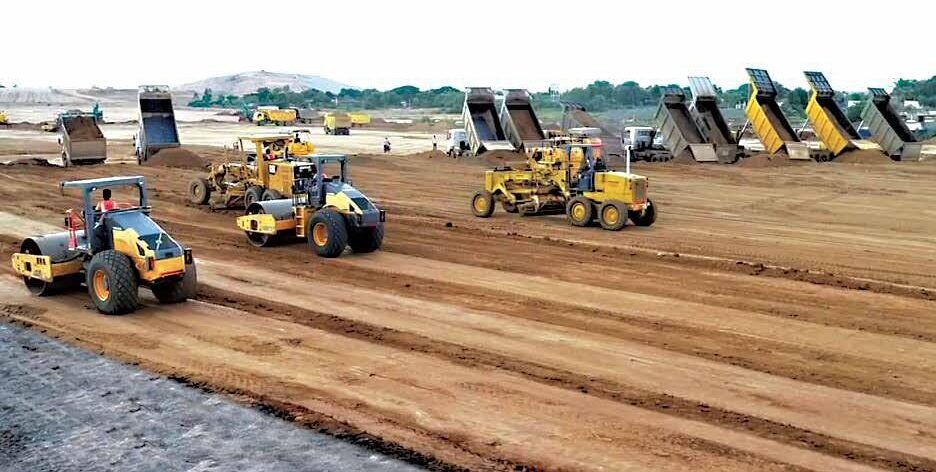
Soil embankment works in full swing at the Mallannasagar Reservoir Project

“With the local MP’s support, we arranged separate vehicles and moved about
70 workmen to our work location at Siddipet within 10 days and engaged them after the mandatory quarantine and medical checks.”
K.S. Viswanatham
Project Manager,
Mallannasagar Reservoir Project
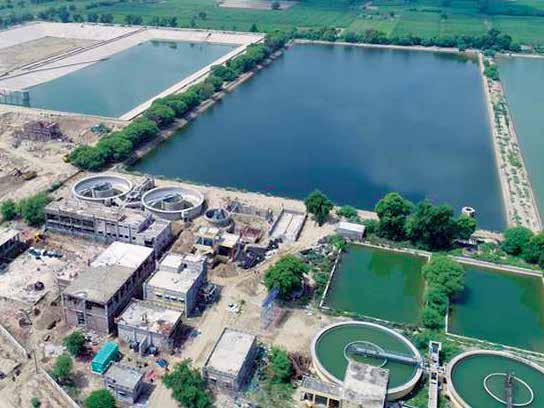
Completed sections of the Ganganagar Plant
After close to 5 months of continuous operations, most of the available workmen wanted to leave and the team could only hold them back for a month but with the help of subcontractors, they managed to source workmen from Madhya Pradesh and Jharkhand. Another huge challenge for Viswanatham was to ensure safety. “With the local MP’s support, we arranged separate vehicles and moved about
70 workmen to our work location at Siddipet within
10 days and engaged them after the mandatory quarantine and medical checks.”
Isolating their work area proved to be an effective and secure strategy. “As our major scope involved soil embankment with around 10 km of daily travel, we decided to avoid it and look for sources close by with the client’s approval,” shares Viswanathan. This ploy worked during the lockdown phase but as fronts opened, longer trips had to restart. To limit the exposure of truck drivers to infections when they stop in between loading points to eat, the team arranged for refreshments centrally and tracked vehicle movements through GPS. With 45% of the works completed, Viswanatham is confident of closing the project by December 2021.
Arriving at the right numbers
“When your project site is located close to the Indo-Pak border, mobilization is always a challenge,” shares Project Manager, Amit Kumar Singh, at the Sri Ganganagar project. “With workmen numbers fast dwindling, our welfare measures and safety initiatives had to kick in and we successfully retained
about 140 of them.”
Prepping up for resumption of works was a two-pronged strategy: one to network with the various workmen gangs across locations and the other to prepare a detailed micro plan mapping the schedule, plotting the catch-up scheme for milestone works to arrive at the quantum of resources required
during resumption.
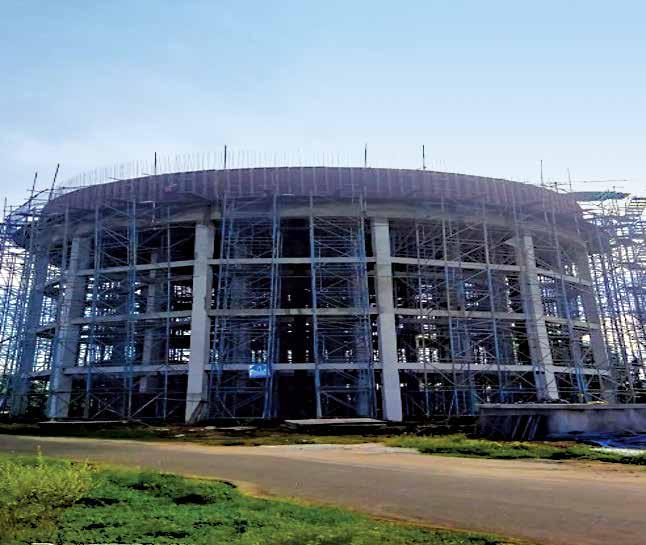
Elevated storage reservoir under construction at the Erode Water Supply Project

“On June 8, we began mobilization and within a short period sourced 950 manpower, and other critical equipment for action. We are about midway having completed 43% of the works and are on track to deliver the project.”
Amit Kumar Singh
Project Manager,
Sri Ganganagar Project
To begin with, works were undertaken across the closed areas of the campus that involved structures such as water treatment plants, associated structures where public movement was almost negligible. “On June 8, we began mobilization and within a short period sourced 950 manpower, and other critical equipment for action,” highlights Amit. An incentive scheme by roping in the subcontractors to recognize workmen for their good work helped significantly. “Right now, we are about midway having completed 43% of the works and are on track to deliver the project as per the schedule by May 2021,” he assures optimistically.

“When things got moving, we went full throttle, added around 45 subcontractors and with 364 workmen we completed the first and second contractual milestones.”
Sumer Rewar
Project Manager, Jawai Cluster IV
Prioritizing revised goals
It was a similar approach adopted by the Jawai Cluster IV, project team that made a difference for Project Manager, Sumer Rewar. “We first revisited our project goals after the lockdown to identify how to accelerate when things got moving. Labour was our strength and retaining a large number of them ensured that we could take up work fronts as and when available.” Deciding to play safe, the team resumed minor activities focussing on civil construction works, completing the balance design submissions and obtaining client approvals. “When things got moving, we went full throttle, added around 45 subcontractors and with 364 workmen we completed the first and second contractual milestones,” says Sumer who is hopeful to deliver the project in
September 2021.
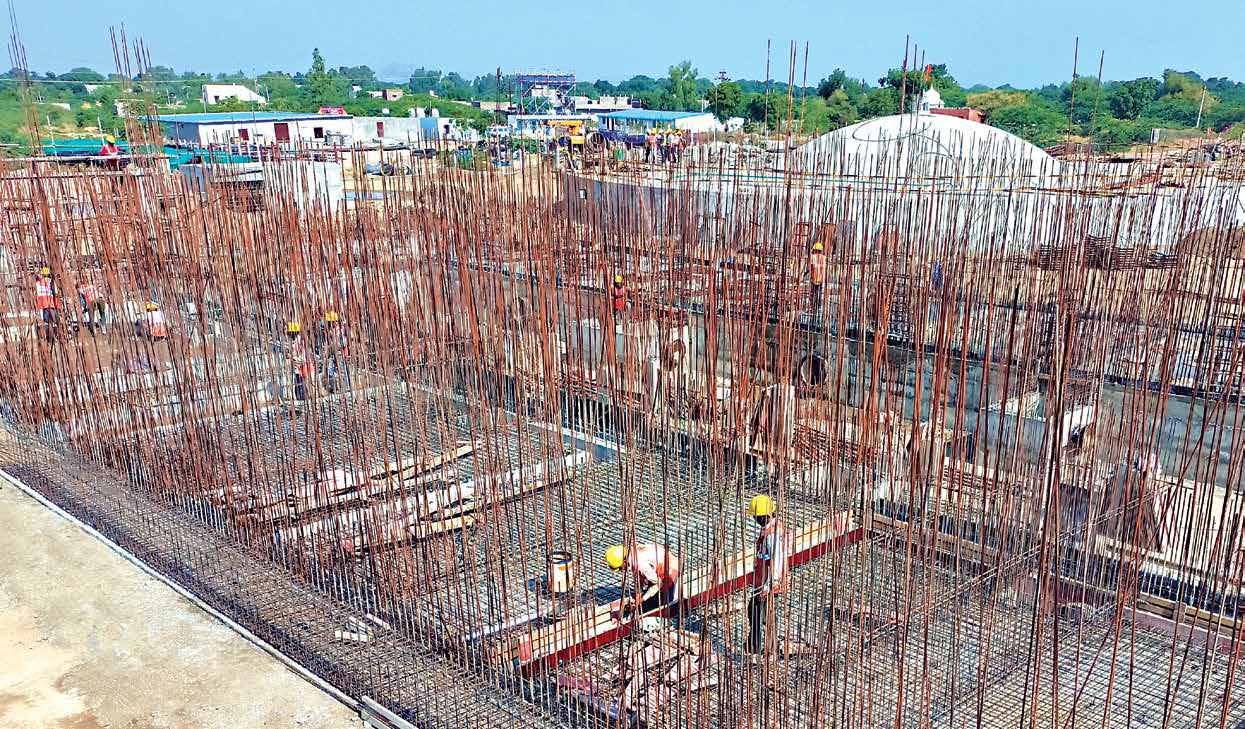
Construction of filter house at Jawai Cluster IV Project
Ticking on the right priorities
A few weeks into March and we had a huge challenge as most of our alignment was running right through the containment zone with the Nagar Nigam area locked down for more than 45 days, mentions Vipin Kumar Tyagi, Project Manager, Udaipur Integrated Infrastructure Project, “When we resumed, the workmen numbers was around 377 and to up the scale we needed to have around 900 which was a task that every member of the team chipped in with and by the end of September we achieved the impossible of mobilizing 952 workmen. This has given us the edge to take up critical works across fronts and today, we are in position to close in on the project,” attributes ipin Kumar Tyagi.
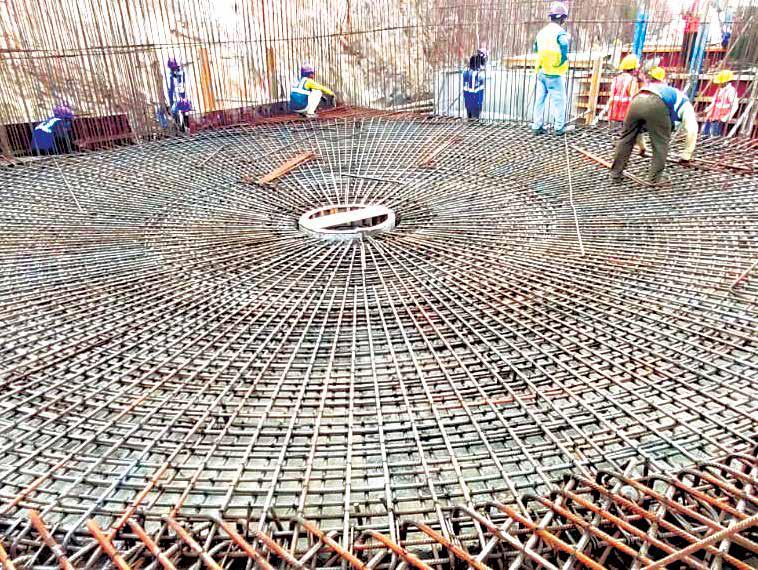
Tube Settler bar binding works at Udaipur Integrated Infrastructure Project

“By the end of September, we achieved the impossible of mobilizing 952 workmen which has given us the edge in taking up critical works across fronts. Today, we are in position to close in on the project. ”
Vipin Kumar Tyagi
Project Manager,
Udaipur Integrated Infrastructure Project
An all-out effort
While ensuring the safety and welfare of 220 workmen at camps was his immediate priority, Project Manager,
M. Srinivasakan, at the at the Mukkombu Upper Anaicut Barrage project, saw his numbers dwindling as soon as the Sharmik trains were introduced. “We acted fast,” he says. “and thanks to the support of the district administration, we brought workmen from other states by arranging special buses and, in some cases, even flights. A tie-up with a testing agency facilitated seamless screening for the workmen to hasten the process of engaging them at work. “The last few months have been tough,” admits Srinivasakan. “Moving ahead and completing 58% of works is our biggest satisfaction and we are on track to complete our major activities as per contract by March 2021.” We share his optimism!
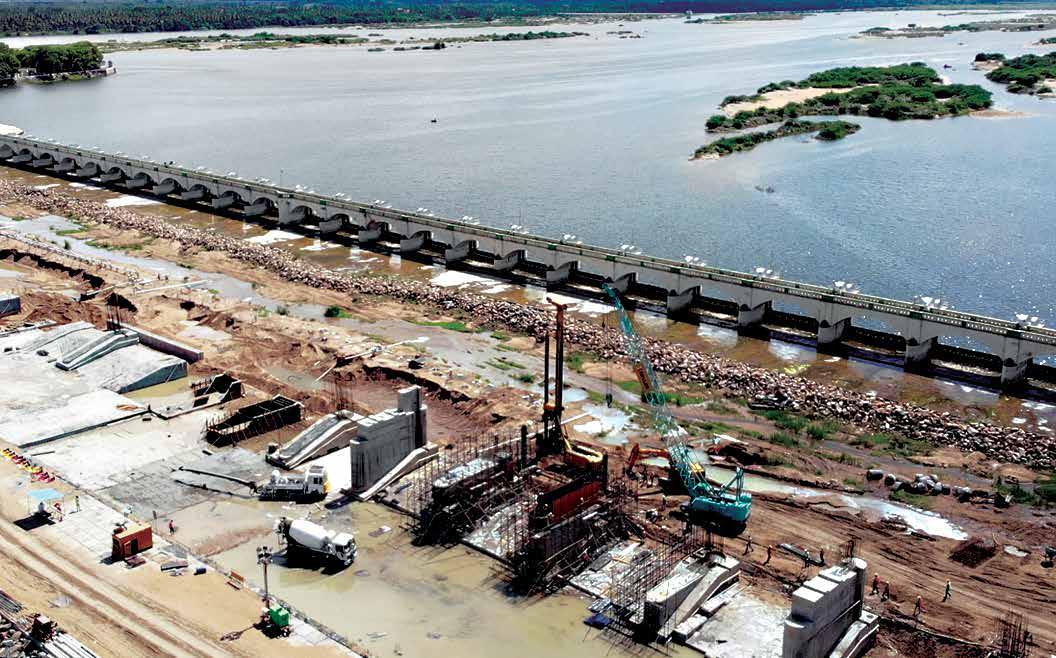
Civil works at Mukkombu Upper Anaicut Barrage Project

“We acted fast and thanks to the support of the district administration, we brought workmen from other states by arranging special buses and, in some cases, even flights. Moving ahead and completing 58% of works is our biggest satisfaction.”
M. Srinivasakan
Project Manager,
Mukkombu Upper Anaicut Barrage
Handling a city centric project
Able to restart work on 9th May with only 40 workmen at site, Project Manager, Mrityunjoy Santra, Ranchi WSS Phase 1 scheme, had a lot of catching up to do. To speedily up the numbers, the team, with their subcontractors, planned a phased mobilization of available resources. Parallelly, they approached the labour commissioner for workmen facilities under the BOCW Act and were assured of funding for inter-state workmen movement. “We also anticipated constraints from the public and prepared mitigation measures by informing the local thanas which helped to ease ground tensions.” Being a city centric job, it is an important enabler, and the team is receiving support from all quarters. With 52% works completed, Mrityunjoy is planning to contractually deliver his project by December 2021.

“To speedily up the numbers, the team planned a phased mobilization of available resources. We also anticipated constraints from the public and prepared mitigation measures by informing the local thanas which helped to ease ground tensions.”
Mrityunjoy Santra
Project Manager,
Ranchi WSS Phase 1 Scheme
Pressing the home advantage
It was reverse migration for Project Manager,
P. Nagendra, Nuapada WSS Scheme at Odisha that is home to India’s migrant labourers. “We retained several of our workmen and added strength later when migrant workmen returned to Odisha from across the country that helped us achieve 88% of physical completion, conduct successful trial runs for two schemes and line-up the other three schemes in due course. It is likely that by 8th March 2021, we should complete the project.”

2.45 ML capacity Elevated Service Reservoir under construction at Ranchi WSS Phase-1 Project

“We retained several of our workmen and added strength later that helped us achieve 88% of physical completion, conduct successful trial runs for two schemes and line-up the other three schemes.”
P. Nagendra
Project Manager,
Nuapada WSS Scheme
Mitigating an overseas challenge
”We were 8.65% ahead of our schedule when partial restrictions were implemented across Qatar,” says,
S. Vishal, Project Manager, at the Industrial Area Sewage Treatment Works, Phase 3A. “Around 240 of our subcontract workmen based at the industrial area were under lockdown as a result of which continuing works at site was increasingly become tough. However, we bridged the gap to some extent by sourcing workmen from other areas.” The ploy was to keep site activities ticking safely in two shifts by breaking down the process in line with a ground zero safe work policy,” he adds. “We have deployed additional resources to accelerate the work progress and are now on track hoping to complete the project within the contractual time.”

“The ploy was to keep site activities ticking safely in two shifts by breaking down the process in line with a ground zero safe
work policy.”
S. Vishal
Project Manager,
Industrial Area Sewage Treatment
Works, Phase 3A Project

Nuapada WSS Plant on course for a scheduled completion
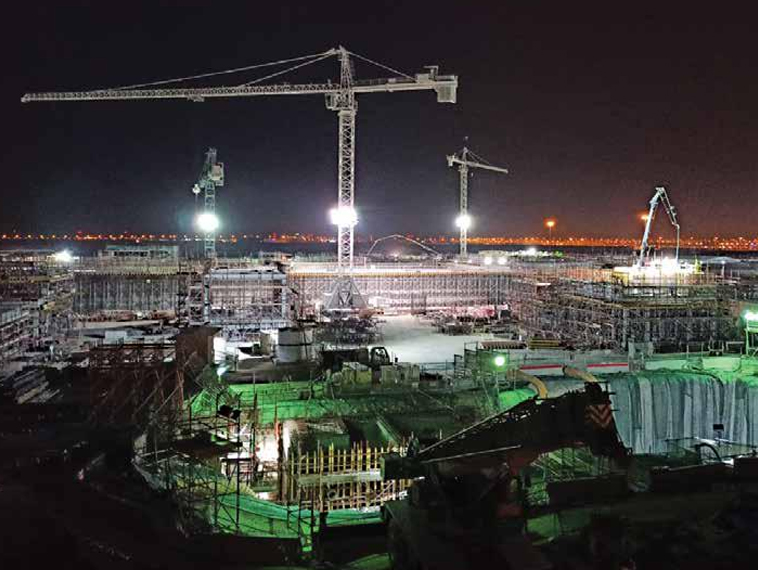
Night operations at the Industrial Area Sewage Treatment Works, Phase 3A Project
Fulfilling a vital human need
Over the last few months, every site has raised the bar with multiple innovative operational methods and collectively, these insights are keeping WET IC in good stead as it surges ahead on a vital mission of building significant water infrastructure projects to fulfill a vital human need.